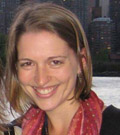Changes in the Patterns of Income and Socioeconomic Segregation, 1970-2009
Sean Reardon and Kendra Bischoff (Stanford University)
This project will describe patterns and changes in U.S. metropolitan area household income and socioeconomic segregation during the period from 1970-2009. Socioeconomic segregation is important because it may reinforce or exacerbate inequality in social outcomes. When high-socioeconomic status households cluster, they pool their extensive financial, human, and social capital to generate resources of which only they can take advantage. Conversely, when households with high income and high socioeconomic status are more dispersed across neighborhoods and communities, then they may help to fund and maintain social services and institutions that serve local lower-income populations.
Socioeconomic segregation grew in the U.S. from 1970-2000, but we don’t know what has happened in the last decade. “My hunch is that income segregation probably kept going up,” Reardon said.
In addition to examining segregation by income, the researchers also will describe segregation of other indicators of socioeconomic status: namely educational attainment, homeownership, and employment status. The report will primarily rely on two dimensions of segregation that have been the focus of most research on segregation: evenness, the extent to which different subpopulations are evenly distributed across residential space; and exposure, the extent to which different subpopulations encounter (or are likely to encounter) one another in their local environments. The project will rely on historical U.S. Census data from 1970-2000, as well as new data from the American Community Survey from the years 2005-2009.
A better understanding of the patterns of socioeconomic segregation in the U.S. will enhance our understanding of patterns of social inequality in general, and also may provide background information necessary for understanding the impact of the recent economic crisis on housing patterns and residential segregation.



